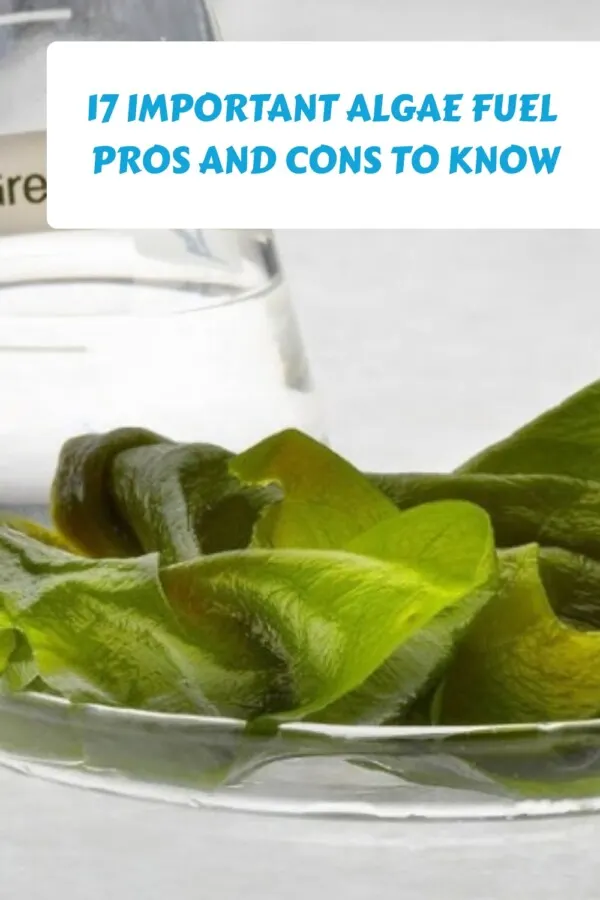The exploration of alternative fuels has become a prominent area of focus for numerous researchers and entrepreneurs. Among the sources of interest, algae biomass has garnered considerable attention as a feasible means to produce algae fuels. So let’s discover the algae fuel pros and cons!
Algae fuel, also referred to as algal biofuel, is derived from algae cultivation, which is aquatic organisms. Algae have recently emerged as a promising alternative fuel source due to their numerous benefits.
They have a considerably lower environmental impact than conventional fuels and can be cultivated in various environments. Algae are classified into two categories: microalgae and macroalgae.
Microalgae, single-celled algal species that may live independently or in colonies, are commonly found in bodies of water such as ponds, lakes, rivers, and seas. Macroalgae, on the other hand, are multicellular algal species known as seaweed.
Algae fuels have the potential to power vehicles and also serve as an energy source for heating and cooking. However, the production of algal biofuels has limitations, and weighing the pros and cons is crucial. So in this article, we will examine the algae fuel pros and cons!
Algae Biofuel Production
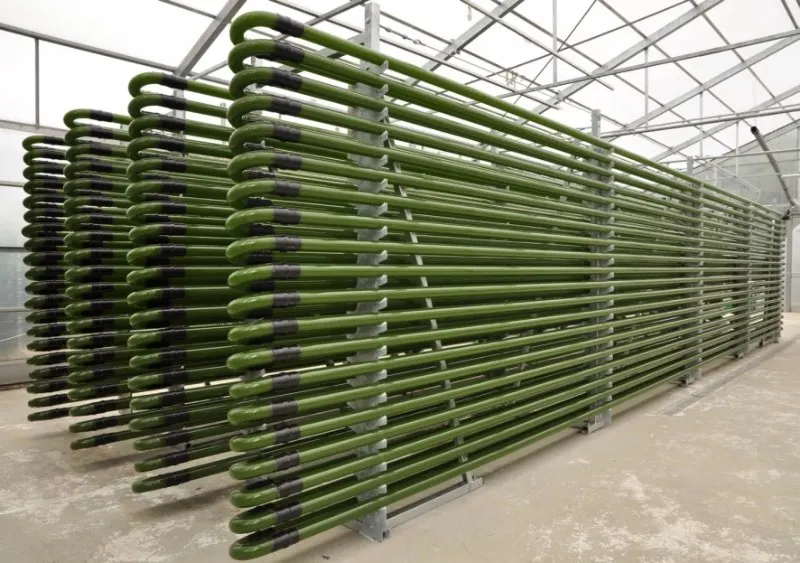
Algae, as living organisms, are comprised of proteins, lipids, carbohydrates, and nucleic acids, like all life forms. Algal lipids are of particular significance in the production of energy.
Biofuels can be obtained from macroalgae and microalgae through various methods, including three types of lipid extraction from algal biomass: expression, ultrasonic technique, and chemical technique. Although producing biofuels utilizing algae is a complex process, it can be simplified by breaking it down.
The primary focus is the mechanical extraction processes, expression, and ultrasonic technique. Expression is the process of pressing oils out of algae using a variety of presses depending on the algal strains. The extracted material is then subjected to chemical processing.

The ultrasonic technique is also a mechanical process, utilizing ultrasonic vibrations to create bubbles in the solution. The resulting bubbles rupture near the algal cell walls, causing them to collapse and releasing oil into the solvent.
Lastly, using chemical solvents is an alternative method for extracting algal oil. Although chemicals offer greater efficiency and ease, they can pose safety risks.
See Related: Different Types of Biomass To Know
How can Algae be used for Fuel?
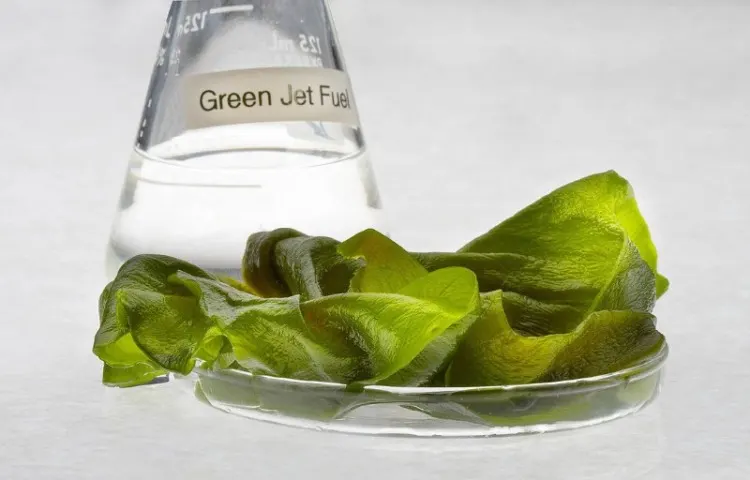
Algae represent a promising energy source due to their rich composition, which can be harnessed for fuel production. Through refining, we can convert algae-derived oil into various biofuels. Furthermore, we can esterify algae oil into biodiesel and utilize them as chemical components in producing a range of goods.
Apart from their lipid content, algae store significant amounts of energy in the form of carbohydrates. As photosynthetic organisms, they use CO2 and sunlight to synthesize carbohydrates, which can be transformed into biofuels.
Algae’s versatile nature extends beyond biofuel production, as they can be precursors for other valuable goods. For instance, we can harness their potential to manufacture plastics and biochemicals, among other applications.
See Related: Important Pros and Cons of Biofuels to Know
Algae Fuel Pros and Cons
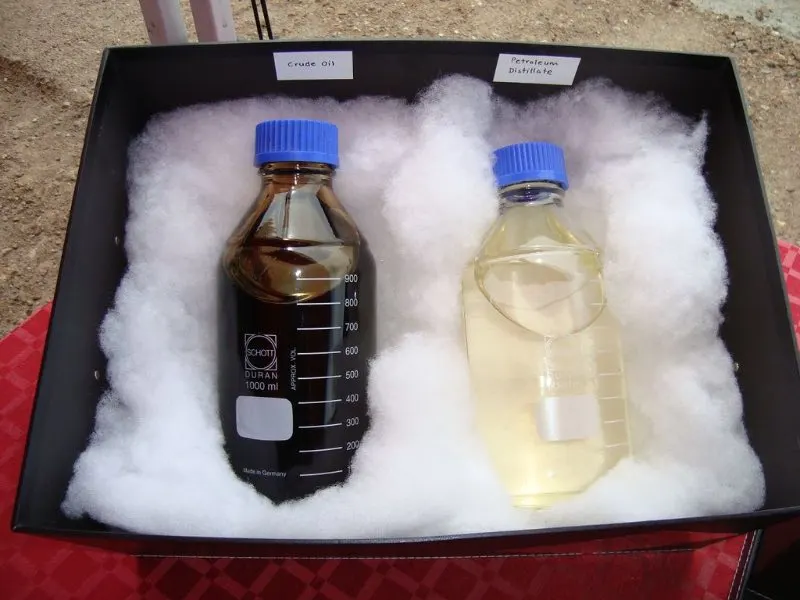
The evaluation of algal biofuel entails thoroughly assessing pertinent factors that could significantly impact its advantages and disadvantages. Such factors, both from an economic and environmental perspective, play a crucial role in effectively determining the feasibility of algal biofuel production. Therefore, the inquiry into algal biofuel production’s consequential effects on humanity and the environment remains imperative.
See Related: Important Pros and Cons of Shale Oil
Algae Biofuel Pros
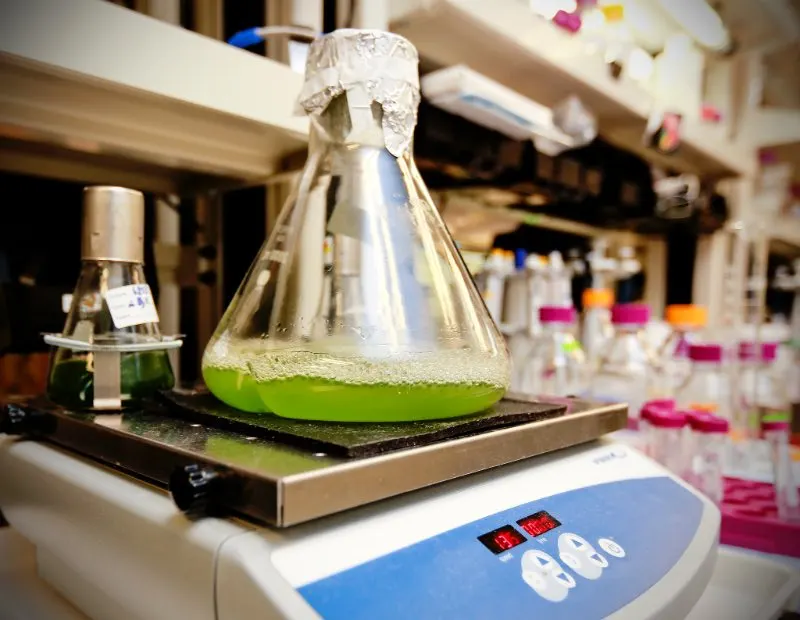
1. Algae fuel comes from renewable energy sources.
Algae, organisms capable of reproduction, offer a replenishable energy source far more sustainable than traditional fossil fuels. As a result, algae fuel has emerged as a promising alternative to fossil fuels.
One of the critical advantages of algae fuel is its carbon-neutral properties. Algae do not emit significant amounts of carbon dioxide or other harmful toxins when burned, in stark contrast to the environmental degradation wrought by petroleum diesel or fuels. This unique feature of algae fuel makes it an attractive and viable option for the future of renewable energy.
See Related: Best Outdoor Jobs | Careers to Consider for Outdoor Lovers
2. Algae fuels have a high energy content.
Algae, being photosynthetic organisms, possess a high-energy content that renders them ideal candidates for bioenergy production. The lipids found in algae are particularly noteworthy, as they offer an excellent source of renewable biodiesel that holds immense potential for a more sustainable energy future. In fact, the oil content of algae is significantly higher than that of other sources utilized in biofuel production, leading to a correspondingly higher energy yield.
3. Algae fuels have a lower carbon footprint.
Algae fuel has a lower carbon footprint due to its unique characteristics as a living organism that photosynthesizes to produce energy, oxygen, and other by-products.
While carbon dioxide is released during the combustion of algae fuel, algae can recapture the carbon dioxide molecules they release. Furthermore, the carbon footprint of algae biofuel production can be further reduced by avoiding the use of petroleum-based fertilizers, which contribute to carbon emissions.
In addition to reducing carbon emissions, algae cultivation has the potential to reduce carbon dioxide in the atmosphere actively. Algae thrive in various aquatic environments, and their ability to grow on a larger scale makes them an attractive option for reducing reliance on fossil fuels.
4. Algae fuels have a lower emissions output.
Algae fuels have a low emissions output, emitting significantly less carbon dioxide than petroleum-based fuels. Furthermore, the natural photosynthesis and carbon capture employed by algae result in a net reduction in carbon dioxide emissions.
As living organisms, algae will eventually end their life cycle and naturally biodegrade. Algae are already present in nature and exist in harmony with other microorganisms. It makes them a safe and sustainable option that does not threaten the environment or wildlife.
This stands in complete contrast to the potentially catastrophic consequences of oil spills associated with traditional fossil fuels, which can potentially cause irreparable damage to marine ecosystems.
5. Algae biofuels can replace the fuels we currently use
As technology advances, researchers, scientists, and manufacturers are poised to create the most efficient form of algae biofuel production in the future. This could transform algae biofuels into our primary source of energy.
One of the critical advantages of algae-based fuels is their compatibility with existing infrastructure. Unlike other renewable energy sources that require significant investments in new infrastructure, the current system for refining and transporting fuels can be repurposed for algae-based biofuels. This could significantly reduce the cost and time required to transition to a more sustainable energy future.
Furthermore, algae-based fuels have the potential to not only replace petroleum-based fuels but also improve upon the current oil and natural gas industry. The shift towards algae-based biofuels offers a sustainable, eco-friendly, and renewable energy source that can be profitable for companies under appropriate conditions.
Algae oil can be distilled into various petroleum-like substances, including vegetable oil, gasoline, jet fuel, and diesel. This versatility highlights the potential of algae-based biofuels to revolutionize the energy industry. In fact, some airlines have already conducted successful tests of algal biofuels in their planes, demonstrating the feasibility of using these fuels in commercial aviation.
6. We can produce a variety of goods from algae.
Did you know that the use of petroleum jelly in personal care products, such as skin care, indirectly involves the consumption of fossil fuels? It is important to consider alternative natural sources for beauty product components, such as algae.
Algae have significant potential for producing components in hygiene and self-care products. In fact, they may even surpass the potential for biofuel production. By refining oils from algae cultivation, we can create algae-based substances that can be incorporated into personal care products. This process is not dissimilar to the use of petroleum-based ingredients in personal care products today, making the transition to algae-based products a viable possibility.
See Related: Best Insulation for a Greenhouse
7. Algal productivity is higher.
Algae are ubiquitous, thriving in diverse environments – you may be surprised to discover that you likely have some in your household right now!
Algae are highly adaptable, with simple requirements for growth and reproduction. Algae can flourish in various settings, including brackish, fresh, seawater, and even in wastewater, providing an opportunity to recycle waste into a valuable resource.
Nonetheless, it is crucial to remain cautious of algal blooms, which arise from the proliferation of algae due to elevated levels of nitrogen and phosphorus in warm water.
See Related: Important Pros and Cons of Fossil Fuels
8. Many algal species are bio-fixers.
Algae species have the potential to be exceptional bio-fixers for the reduction of greenhouse gas emissions. Bio-fixers are photosynthetic organisms that transform inorganic carbon into organic compounds.
Through biofixation, certain algae can use carbon dioxide from the air and convert it into carbohydrates. As bio-fixers, algae can effectively reduce greenhouse gas emissions into valuable products.
Numerous algae species utilize photosynthesis to consume carbon dioxide and release oxygen. This presents a promising opportunity to build algae farms near areas with high carbon dioxide emissions, such as power plants and industrial manufacturing facilities. Converting carbon dioxide into biodiesel can reduce carbon emissions and increase fuel production simultaneously.
A significant portion of global greenhouse gas emissions arises from daily transportation. If public and private vehicles switch from fossil fuels to sustainable biomass, such as algae biofuels, greenhouse gas emissions can be curtailed. Increased use of algae fuels will necessitate larger-scale algae growth, which can directly result in more carbon sequestration through biofixation.
See Related: Important Pros and Cons of Natural Gas to Know
Algae Biofuel Cons
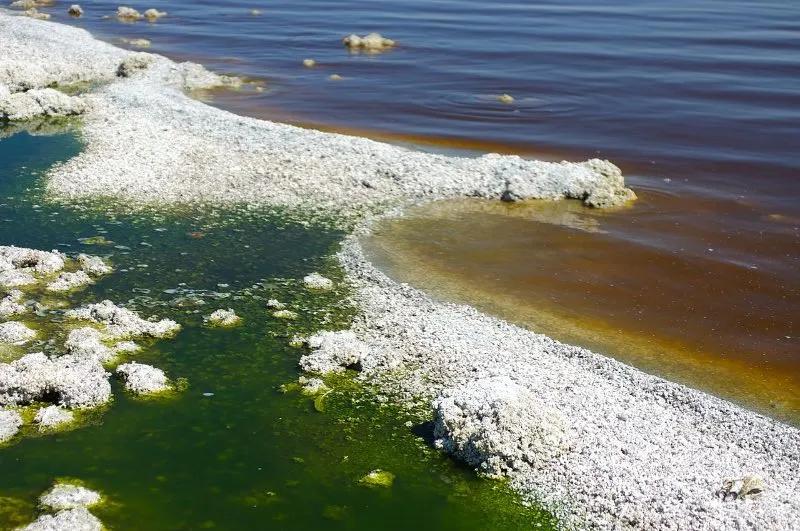
1. Algae cultivation requires a significant amount of space and water.
Algae, a renewable resource with great potential for biofuel production, presents a promising solution for reducing our dependence on fossil fuels. Its versatility in growth conditions means it can be grown almost anywhere, offering a solution to the issue of fuel availability.
However, despite its benefits to the environment, its practicality is hindered by the economic cost of production. The expenses related to space and water requirements for algae cultivation are significant. Growing enough algae for biodiesel demands a substantial amount of arable land and water resources, rendering it less practical for everyday use.
Therefore, while algae biofuel may be an ideal fuel option for the environment, the cost-effectiveness of algae cultivation is currently limiting its widespread use. Future innovation in the field may lead to more efficient and cost-effective means of production, making algae a viable alternative to traditional petroleum fuels.
2. Algae fuels are more expensive to produce than conventional fuels.
The viability of algae fuels as a sustainable alternative to fossil fuels is hindered by their production process being more complex and costly. Multiple processing steps are necessary, and they demand specialized equipment that can be costly for large-scale algae biofuel production. Moreover, the limited availability of land and water resources further adds to the production costs.
Nevertheless, it’s essential to remember that algae fuel is a relatively new industry. And as with any budding sector, initial costs are often high. As we continue to explore and refine the technology and techniques involved, we can expect the algae production costs to decrease and become more affordable over time. Consequently, we may witness algae fuel emerge as a competitive and economically viable energy source.
3. Algae fuels require certain techniques and equipment.
Given that the algae biofuel industry is relatively new, one of its prominent drawbacks pertains to the need for specialized techniques to harvest and refine it.
Specialized harvesting methods are required to ensure that algae remain uncontaminated during their collection. Algae are susceptible to biological contamination that can impair cell growth and hinder the accumulation of valuable compounds.
In a large-scale mass cultivation scenario, contaminants can significantly reduce the lipid production of algae and even initiate a contamination pattern. Therefore, advanced refining techniques and specialized methods must be employed to convert algae into fuel. This inevitably results in a comparatively more expensive product than other fuel sources.
4. Algal biofuel production takes a long time.
The production of algal biofuels involves multiple steps and techniques to ensure optimal yield and quality. To be useful as fuel, harvested algae must undergo various extraction and refining processes.
The most straightforward method of algal oil extraction is an expression. It employs an oil press to extract roughly a quarter of the algal oil. The more advanced technique of hexane solvents can retrieve nearly all of the algae’s oils, while supercritical fluids can remove all of the oil.
After extraction, the oil is refined through transesterification. It is a process that uses a catalyst to convert it into a combination of gasoline and glycerol. During refinement, the glycerol is removed to produce the final biofuel product.
However, these processes are time-consuming and require specialized equipment, which adds to the cost of algal biofuels. Compared to the extraction of fossil fuels, algal fuel production is considerably more complex, making it a less straightforward solution for our primary energy needs.
5. Algae biofuels have a shorter life than conventional fuels.
The use of algae fuels is a promising alternative to traditional fossil fuels. However, one potential drawback is that algae fuel has a shorter shelf life than other fuels. Biofuel is composed of various molecules susceptible to oxidation and other forms of degradation, leading to decreased efficiency and potential unusability.
To maximize the benefits of algae fuel, it is crucial to use them as soon as possible after production. Storage for extended periods may deteriorate the fuel’s chemical properties, rendering it less efficient and potentially unusable.
Therefore, handling and storing algae fuel with care is essential, ensuring proper conditions that minimize the risk of oxidation and other forms of deterioration.
6. Algae fuels may not be available in all areas.
When evaluating the use of algae fuel, it is important to consider its availability in your local area. Algae fuels are still a niche product, with fewer than 100 companies in the world producing them. Therefore, it may not be surprising that they are not widely available in many regions.
Before making a purchasing decision, it is essential to research the companies that produce algae biofuel to determine whether they serve your area. If you are unable to find a local supplier, you may need to purchase algae fuel from a different region.
However, this approach presents several logistical challenges, such as the reliability of the fuel supply and the costs and practicalities of transportation.
Additionally, it is crucial to have a clear understanding of how and when you intend to use the fuel, as well as how and where you will store it. Without careful planning, the benefits of algae fuel may be outweighed by the practical challenges of accessing and using it.
7. Algae fuels may not be suitable for all transportation needs.
Algal biofuels have garnered much attention for their potential as a renewable energy source, but there are several factors to consider when assessing their viability for transportation purposes. While the renewability of algae fuel is a significant advantage, the industry is still in its early stages, and the limited number of businesses producing algae-based fuels makes it difficult to ensure consistent availability.
Moreover, while algae biofuel emits fewer greenhouse gases than conventional fuels, it may not be compatible with all engines. Adapting engines and fuel to work together can be complex and expensive, making it an obstacle to widespread adoption.
The cost of producing algae biofuel is also a consideration. Extensive research and development are required to optimize the process, which adds to the expense. Only a few companies focus on algae biofuel projects as a result. Consequently, finding gas stations that carry algae fuel can be a challenge.
8. The quality of oil may vary.
Algae biofuel production is a complex process involving several critical stages, each of which can impact the final product’s quality. As with many other crops, variations in quality can occur between batches. However, consistency is essential when producing algae biofuel for commercial use.
To achieve consistent quality, algae must be grown in a controlled environment, free from contamination. Any changes in water quality or climate can alter the photosynthetic profile, making success uncertain. Additionally, each stage of algae biofuel production, from crushing and filtering to purification, must be carried out meticulously to ensure that the final product meets the required quality standards.
9. Researching the efficient production of algae-based biofuel will take time.
Algae cultivation has become an important area of focus for many companies exploring various engineering strategies to build an efficient algae cultivation system. Scaling up commercial algae production requires growing significant quantities of algae in limited space. This necessitates the use of both closed and open-pond systems.
Closed systems allow for accurate control of the environment for algal growth and are equipped with photobioreactors for photosynthetic strains of algae. Conversely, closed systems with standard bioreactors are suitable for algae strains that do not require sunlight.
Bioreactors, small tanks similar to those used in microbiological growth, can facilitate efficient and controlled algal development. Through the use of these innovative systems, companies can optimize algae production and enhance the efficiency of biofuel production.
See Related: What is Biomass Energy: Pros & Cons of this Resource
Final thoughts
The potential of algae biofuel as a substitute for fossil fuels is subject to various advantages and drawbacks. On the positive side, this renewable resource can be cultivated and harvested repeatedly, rendering it a valuable asset.
Algae biofuel has a high energy output and does not compete with food production, unlike other biofuels. Furthermore, algae can be grown in wastewater, presenting a sustainable environmental solution.
However, some challenges must be overcome in the production of algae biofuel. The technology remains in its early stages, making it costly and energy-intensive to produce on a large scale. Scaling up production is also impeded by the potential for ecosystem harm.
Despite these concerns, algae biofuel could be a promising sustainable option to replace fossil fuels. More research is necessary to address production and scaling issues to achieve its full potential.
FAQ
Should we use algae as biofuel?
Algae has emerged as a promising candidate for sustainable biofuel production owing to its abundance, scalability, and potential for carbon-neutral fuel production.
Despite these benefits, algae as an alternative fuel source have challenges. The high water and nutrient requirements of algae growth present a significant challenge. It necessitates substantial land and water resources to cultivate algae in quantities necessary for large-scale production.
Additionally, unlike traditional fuels, algae biofuels do not have a long shelf life and degrade quickly when exposed to air or sunlight. This characteristic makes transporting algae fuel over long distances difficult without costly refrigeration.
What happened to algae biofuel research?
Algae biofuel research has encountered significant challenges despite its promising potential. The industry has experienced ups and downs in its quest to create an alternative fuel source to reduce carbon emissions and decrease reliance on fossil fuels. However, the drop in oil prices made it difficult for algae to compete economically with conventional fuels.
Moreover, there are concerns about algal blooms, which can lead to environmental issues such as dead zones in bodies of water. Algae cultivation also requires substantial amounts of land and water, scarce resources in many regions where they’re most needed.
What are the limitations of biofuels?
The utilization of biofuels is constrained by several limitations. Despite their numerous advantages, the primary challenge lies in their high production cost. The reliance on monoculture and fertilizers, which can have adverse environmental impacts, is another concern.
Moreover, biofuel production necessitates considerable land and water resources. Additionally, the extraction of oils from biomass is a time-consuming and intricate process, requiring sophisticated equipment. While the prospects of large-scale biofuel production are promising, the current market cannot accommodate it.
What are the disadvantages of blue-green algae?
Cyanobacteria, commonly known as blue-green algae, possess numerous advantages in the natural aquatic ecosystem. They are efficient at fixing nitrogen, which can enhance the fertility of surrounding organisms. Additionally, they produce oxygen and carbon dioxide like other organisms.
Nevertheless, blue-green algae can threaten humans, as they can produce toxins that are harmful to both humans and animals when ingested in large amounts. In severe cases, these toxins can even lead to death.
Related Resources:
- Best Geothermal Greenhouse Systems
- Different Types of Biomass To Know
- Important Pros and Cons of Fracking

